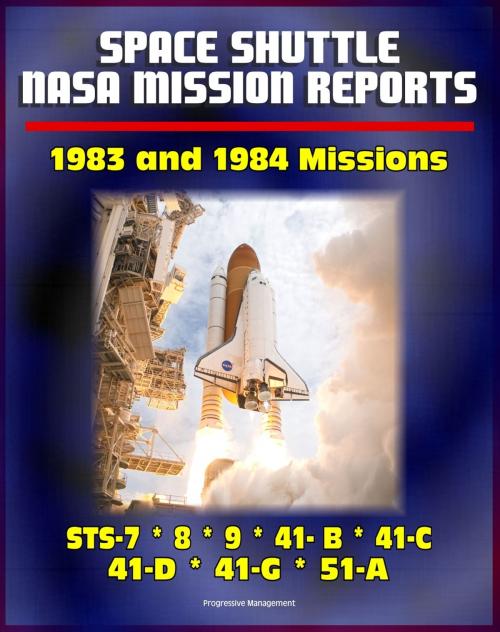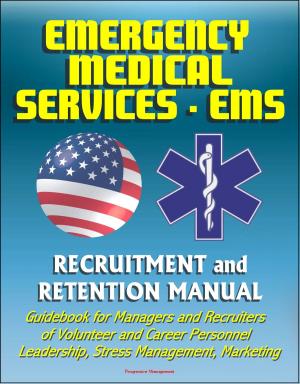Space Shuttle NASA Mission Reports: 1983 and 1984 Missions, STS-7, STS-8, STS-9, STS 41-B, STS 41-C, STS-41-D, STS 41-G, STS 51-A
Nonfiction, Science & Nature, Science, Physics, Astronomy, History, Americas| Author: | Progressive Management | ISBN: | 9781465736277 |
| Publisher: | Progressive Management | Publication: | December 22, 2011 |
| Imprint: | Smashwords Edition | Language: | English |
| Author: | Progressive Management |
| ISBN: | 9781465736277 |
| Publisher: | Progressive Management |
| Publication: | December 22, 2011 |
| Imprint: | Smashwords Edition |
| Language: | English |
These official final orbiter mission reports issued by the NASA Johnson Space Center cover missions in 1982 and 1983: STS-7, STS-8, STS-9, STS 41-B, STS 41-C, STS-41-D, STS 41-G, STS 51-A. In these thorough reports, with information and specifics not available on NASA website mission descriptions, each orbiter system is reviewed in detail along with technical information on performance and anomalies.
STS-7: The STS-7 flight was launched on June 18, 1983 and landed at Edwards AFB, CA. The crew for this flight, the largest number ever flown, were Captain R. L. Crippen, Commander; Captain F. H. Hauck, Pilot; and Colonel J. M. Fabian and S. K. Ride, PhD., Mission Specialists; and N. E. Thagard, M.D., Medical Specialist.
STS-8: The STS-8 flight was launched on August 30, 1983 and landed at Edwards on September 6. STS-8 provided the first night launch and landing of the Program. The crew for this fourth operational flight was Capt. R. H. Truly, Commander; Cdr. D. C. Brandenstein, Pilot; Lt. Col. G. S. Bluford, and Lt. Cdr. D. A. Gardner, Mission Specialists; and W. E. Thornton, M.D., Medical Specialist.
STS-9: The STS-9 flight, the first flight of the European-Space-Agency built Spacelab, was launched on November 28, 198 and landed at Edwards on December 8, 1983. This flight was launched on the most northern inclination (57 deg.) of any U.S. manned flight. The 6-man crew for this Spacelab mission, the largest crew ever flown, was composed of four astronauts and two non-astronaut payload specialists, one of whom was the first foreign person to be launched by the U.S.
STS 41-B: The STS-41B flight was launched from Launch Complex 39 and landed at the KSC SLF on February 11, 1984. This flight ended with the completion of one of the last major test objectives of the program, that of landing at the Kennedy Space Center.
STS 41-C: The STS 41-C flight was launched on April 6, 1984 and landed at Edwards on April 13, 1984. This flight was scheduled as a 6-day mission, but SMM retrieval problems during flight day 3 operations resulted in extending the mission 1 day for a total of 7 days. Also, this flight was scheduled to land at the Kennedy Space Center Shuttle Landing Facility; however, the possibility of adverse weather (rain) resulted in a decision to land at Edwards AFB, California.
STS-41-D: The STS 41-D mission, the first for the OV-103 vehicle, Discovery, was scheduled for launch on June 25, 1984, and June 26, 1984, and August 29, 1984. The attempted launch on June 25, 1984, was scrubbed because GPC-5 (general purpose computer-5), which contained the backup flight system software, exhibited two memory parity errors at T-32 minutes.
STS 41-G: The STS 41-G mission, the sixth flight for the OV-099 vehicle, Challenger, was launched from Launch Complex 39A on October 5, 1984. In the areas of payloads and experiments, all except the SIR (Shuttle Imaging Radar) accomplished essentially all of their objectives. The crew for this flight were Robert L. Crippen, Captain, USN, Commander; Jon A. McBride, Commander, USN, Pilot; Sally K. Ride, PhD., Kathryn D. Sullivan, PhD., and David C. Leetsma, Lt. Cdr., USN, Mission Specialists; Paul D. Scully-Power, PhD., Payload Specialist; and Marc Garneau, PhD., Canadian Payload Specialist.
STS 51-A: The STS 51-A mission was scheduled for launch on November 7, 1984, but the launch was scrubbed during the planned hold at T-20 minutes because the data indicated that the predicted winds-aloft would apply shear loads in excess of the design limits of the vehicle. The final countdown culminated in a successful launch from launch complex 39A on November 8, 1984, and the mission was completed with a landing at the KSC SLF on November 16, 1984.
These official final orbiter mission reports issued by the NASA Johnson Space Center cover missions in 1982 and 1983: STS-7, STS-8, STS-9, STS 41-B, STS 41-C, STS-41-D, STS 41-G, STS 51-A. In these thorough reports, with information and specifics not available on NASA website mission descriptions, each orbiter system is reviewed in detail along with technical information on performance and anomalies.
STS-7: The STS-7 flight was launched on June 18, 1983 and landed at Edwards AFB, CA. The crew for this flight, the largest number ever flown, were Captain R. L. Crippen, Commander; Captain F. H. Hauck, Pilot; and Colonel J. M. Fabian and S. K. Ride, PhD., Mission Specialists; and N. E. Thagard, M.D., Medical Specialist.
STS-8: The STS-8 flight was launched on August 30, 1983 and landed at Edwards on September 6. STS-8 provided the first night launch and landing of the Program. The crew for this fourth operational flight was Capt. R. H. Truly, Commander; Cdr. D. C. Brandenstein, Pilot; Lt. Col. G. S. Bluford, and Lt. Cdr. D. A. Gardner, Mission Specialists; and W. E. Thornton, M.D., Medical Specialist.
STS-9: The STS-9 flight, the first flight of the European-Space-Agency built Spacelab, was launched on November 28, 198 and landed at Edwards on December 8, 1983. This flight was launched on the most northern inclination (57 deg.) of any U.S. manned flight. The 6-man crew for this Spacelab mission, the largest crew ever flown, was composed of four astronauts and two non-astronaut payload specialists, one of whom was the first foreign person to be launched by the U.S.
STS 41-B: The STS-41B flight was launched from Launch Complex 39 and landed at the KSC SLF on February 11, 1984. This flight ended with the completion of one of the last major test objectives of the program, that of landing at the Kennedy Space Center.
STS 41-C: The STS 41-C flight was launched on April 6, 1984 and landed at Edwards on April 13, 1984. This flight was scheduled as a 6-day mission, but SMM retrieval problems during flight day 3 operations resulted in extending the mission 1 day for a total of 7 days. Also, this flight was scheduled to land at the Kennedy Space Center Shuttle Landing Facility; however, the possibility of adverse weather (rain) resulted in a decision to land at Edwards AFB, California.
STS-41-D: The STS 41-D mission, the first for the OV-103 vehicle, Discovery, was scheduled for launch on June 25, 1984, and June 26, 1984, and August 29, 1984. The attempted launch on June 25, 1984, was scrubbed because GPC-5 (general purpose computer-5), which contained the backup flight system software, exhibited two memory parity errors at T-32 minutes.
STS 41-G: The STS 41-G mission, the sixth flight for the OV-099 vehicle, Challenger, was launched from Launch Complex 39A on October 5, 1984. In the areas of payloads and experiments, all except the SIR (Shuttle Imaging Radar) accomplished essentially all of their objectives. The crew for this flight were Robert L. Crippen, Captain, USN, Commander; Jon A. McBride, Commander, USN, Pilot; Sally K. Ride, PhD., Kathryn D. Sullivan, PhD., and David C. Leetsma, Lt. Cdr., USN, Mission Specialists; Paul D. Scully-Power, PhD., Payload Specialist; and Marc Garneau, PhD., Canadian Payload Specialist.
STS 51-A: The STS 51-A mission was scheduled for launch on November 7, 1984, but the launch was scrubbed during the planned hold at T-20 minutes because the data indicated that the predicted winds-aloft would apply shear loads in excess of the design limits of the vehicle. The final countdown culminated in a successful launch from launch complex 39A on November 8, 1984, and the mission was completed with a landing at the KSC SLF on November 16, 1984.















